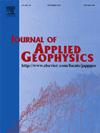Practice and theoretical analysis of ground penetrating radar in voids detection of urban underground pipe-jacking
IF 2.2
3区 地球科学
Q2 GEOSCIENCES, MULTIDISCIPLINARY
引用次数: 0
Abstract
Pipe-jacking construction technology has become more prevalent with the development of urbanization. At the same time, non-destructive detection of the compactness around the pipe-jacking is a necessary step in the pipe-jacking engineering. Therefore, the present study intends to explore the non-destructive detection of pipe-jacking quality by using ground penetrating radar. Ground penetrating radar can also be called GPR for short, and it plays an irreplaceable role in our life through its efficient and nondestructive detection function. In the study, void models for plastic jacking pipes, reinforced concrete jacking pipes, and steel jacking pipes were constructed, and forward simulations of ground penetrating radar were conducted using the two-dimensional finite element method to investigate the parameter influences brought about by seasonal changes and the shape of the voids; furthermore, combined with the sewage jacking pipe project in Xiangtan City, Hunan Province, practical detection and experimental research on reinforced concrete jacking pipes and steel jacking pipes are carried out using ground penetrating radar. The research results indicate that ground penetrating radar is feasible for detecting the density conditions around cement jacking pipes, plastic jacking pipes, and reinforced concrete jacking pipes. However, when detecting the void conditions around steel jacking pipes, strong multiple reflections occur between the radar antenna and the pipe wall, making it impossible to achieve the goal of detecting the density behind the jacking pipe. Therefore, future research is needed to develop new methods and technologies for assessing the construction quality of steel jacking pipes.
求助全文
约1分钟内获得全文
求助全文
来源期刊

Journal of Applied Geophysics
地学-地球科学综合
CiteScore
3.60
自引率
10.00%
发文量
274
审稿时长
4 months
期刊介绍:
The Journal of Applied Geophysics with its key objective of responding to pertinent and timely needs, places particular emphasis on methodological developments and innovative applications of geophysical techniques for addressing environmental, engineering, and hydrological problems. Related topical research in exploration geophysics and in soil and rock physics is also covered by the Journal of Applied Geophysics.
 求助内容:
求助内容: 应助结果提醒方式:
应助结果提醒方式:


